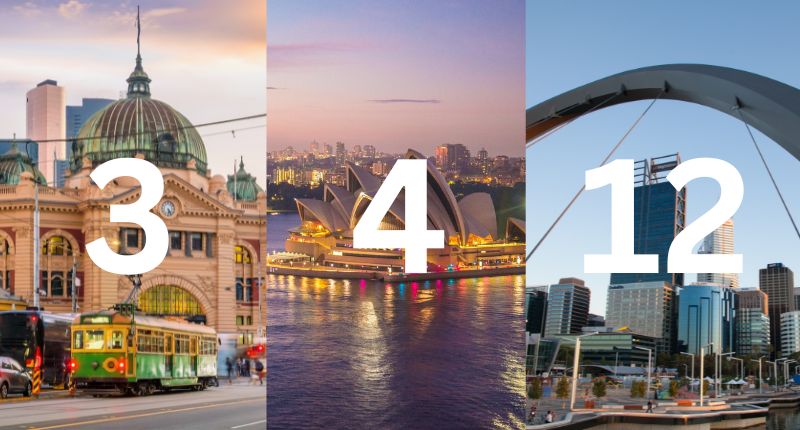
- Healthcare was the main driver for Melbourne's return to third place
- Perth was ranked equal twelfth, and saw the third largest jump in rankings
- Adelaide was ranked twelfth in the world
The Economist Intelligence Unit’s 2023 Global Liveability Index has been released, with Melbourne taking third place, ahead of Sydney at fourth.
As the world continues to settle post-Covid, the global index began to rise. Covering 173 cities across the globe, except for Kyiv this year, the average index score has improved to 76.2 out of 100, up from 73.2 last year. It also marks the highest score in 15 years compared to the original comparable list of 140 cities.
The report found healthcare recorded the most improved scores, with other areas seeing smaller gains.
Stability was the sole criterion to see a slight decline. The report said this pertained to the belief that there was more corruption and more civil unrest in several cities amidst the cost-of-living crisis.
Top 10 most liveable cities in the world
- Vienna, Austria
- Copenhagen, Denmark
- Melbourne, Australia
- Sydney, Australia
- Vancouver, Canada
- Zurich, Switzerland (equal 7th)
- Calgary, Canada (equal 7th)
- Geneva, Switzerland
- Toronto, Canada
- Osaka, Japan (equal 10th)
- Auckland, New Zealand (equal 10th)
Near-perennial favourite, Vienna, retained the top spot, having lost the accolade in 2021 due to the pandemic. The Austrian capital has held first place eight times out of the past ten six-monthly surveys.
Melbourne returns to best in Australia
While Melbourne ranked behind Adelaide and Perth in 2021, the laneway capital of Australia has again risen to the most liveable city in Australia.
The main driver for the improved scores included changes to the healthcare context.
It is a big improvement from the rankings when Covid first hit, with the University of Technology Sydney’s Head of the School of Built Environment and Professor of Urban Planning, Professor Jua Cilliers, telling The Property Tribune:
“The major factor pushing the rankings up was the health rating.”
Professor Jua Cilliers, Head of the School of Built Environment and Professor of Urban Planning, UTS
“In the ranking, there are five broad categories: stability, healthcare, culture and environment, education, and infrastructure.”
While Melbourne and Sydney scored 100 in health, education, and infrastructure, Professor Cilliers said that was not the case in previous rankings during Covid. “The health system was really under pressure and the rankings took that into account.”
Both Melbourne and Sydney are now back in business, achieving a result that is tough to come by.
“There are very few cities that score 100 across some of the five categories, and Melbourne and Sydney have scored 100 in three,” said Professor Cilliers.
What Australia’s two largest cities offer is also distinctly different.
“From a planning perspective, Melbourne is known for its vibrant arts scene and cultural diversity. It bounced back after the pandemic and emphasised the strengths from a planning perspective and a sense of place,” said Professor Cilliers.
Sydney, however, was noted for its iconic landmarks and economic opportunities; these became more evident after the lockdowns.
Perth third in the world for most improved
The cities which recorded the largest move by rank included:
- Wellington, New Zealand, up 35 to 23rd
- Auckland, New Zealand, up 25 to 10th
- Perth, Australia, up 21 to 12th
- Bucharest, Romania, up 21 to 99th
- Hanoi, Vietnam, up 20 to 129th
- Adelaide, Australia, up 19 to 12th
- Kuala Lumpur, Malaysia, up 19 to 94th
- Jakarta, Indonesia, up 14 to 139th
- Stuttgart, Germany, up 13 to 25th
- Hong Kong, up 13 to 61st
… and if you’re curious, Damascus, Syria, remained at the bottom of the livability index; the city saw no improvement whatsoever on the index, while other cities that ranked lower on the list did see improvements across healthcare and education.







